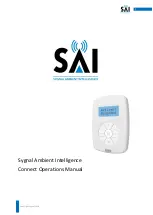
ASSEMBLY
continued
- 5 -
4. Raise the brake arm all the way up, grasp the winch
post, and squeeze the brake arm firmly as shown.
Pull
8. Mount the cradle on top of the telescoping section.
Flip out the tilt latch to allow the cradle to tilt for loading
and for hanging drywall on sidewalls and sloped ceilings.
9. Place the tapered plates of the cross arms into the
tapered sockets on the cradle. The spring tab on the
back of the cross arm will lock it into place.
10. To extend the outriggers for use, pull out on the out-
rigger lock pin with your right hand and slide the outrigger
out with your left hand as shown. The lock pin will engage
at three different points on the outrigger: fully retracted,
extended 21”, or extended 33”. MAKE SURE that the lock
pins are engaged in one of these three positions before
loading the unit. DO NOT use the PANELLIFT
®
with the
outriggers extended beyond the 33” point.
Retract the outriggers when storing or
transporting the unit.
5. Place your right hand on top of the frame and pull the
winch assembly towards you. While pulling the winch
towards you, grip the brake arm sufficiently to prevent
back-lash of the cable on the winch.
6. When the winch is fully extended, release the brake
arm and swing the retaining hook away from the
telescoping sections.
7. Now push the winch assembly back towards the
frame. This action will automatically engage the slide
bar lock. ALWAYS check to make sure that the slide bar
lock is fully engaged by rotating it clockwise as far as
possible before proceeding. The illustration shows a fully
engaged slide bar lock. NOTE: DO NOT tighten the slide
bar lock nut assembly. This will make it impossible to col-
lapse the PANELLIFT
®
properly for transport and storage.




























